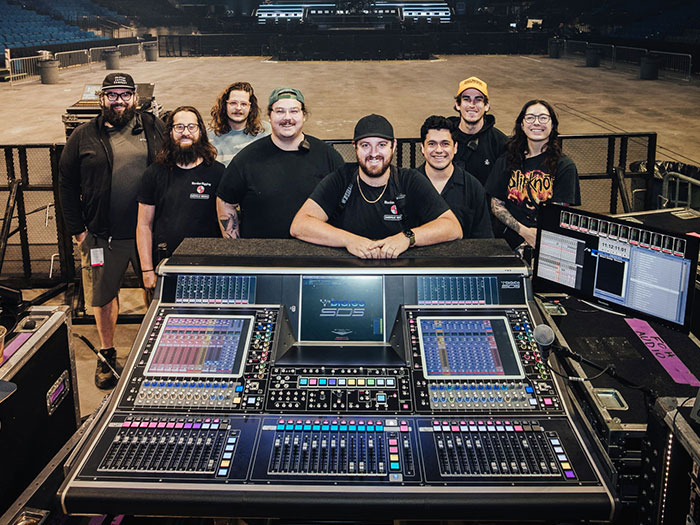Hip-hop artist Nate Feuerstein, known as NF, is out on the HOPE Tour, his first headlining arena trek in support of his new album of the same name. FOH Engineer, Travis Stoker and Monitor Engineer, Murphy Johnson, pilot DiGiCo SD5 consoles provided by tour vendor PRG.
“The biggest thing for me with the SD5 is that the amount of programming you can do on these consoles is incredible,” commented Stoker, who also served as the designer of the HOPE Tour’s L-Acoustics PA system. “With the SD5, we’re using timecode to recall snapshots; we use lots of macros on these desks to be able to control various features; we have lots of redundancy built in since it is a very track-heavy show; and we have analog fallback from our playback system and for other aspects of our system where we can just hit a macro and it’s instantaneously switching over to a different set of source inputs for certain channels.”
“Along with being able to route things however I really need to, I’m not stuck in a box of ‘I have to route the system this way because this is how the system works,’ as you do with certain other desks. They have very specific ways of doing things, but with DiGiCo, you can put your own spin on how you set your files up down to the routing and console layout. So that’s been a very important part for me, especially with the outboard gear that I’m carrying. So I’m not limited to a certain amount of insert points. It gives me a lot of flexibility with file setup,” added Stoker.
Johnson is also managing a 30-plus-input drum riser as well as the 25 channels of playback tracks. “The way the SD5 lets me organise and program all of that is what sets it apart for me,” he commented. “Wedges, IEMs, and side-fills together can be tricky, but I always know where everything is when it’s needed.”
Stoker also cites the benefits of having both the FOH and monitor consoles on the same Optocore loop. “It’s been really helpful because our playback comes in digitally via MADI through an Optocore DD4MR on the loop, and the SD5 lets us keep our signal digital all the way to the amps via AES, and then AVB through the L-Acoustics P1 processor,” he explained. “The only conversions that take place for playback are really at the outboard gear, between the preamps, and the line-out cards that are handling the I/O for outboard gear.”
“I have an outboard vocal chain and a couple of reverb units, but otherwise everything is done on the desk, including dynamic EQ and compression, and the onboard de-esser,” added Johnson. “And it sounds fantastic night after night.”
Stoker praised the 32-bit Stadius pre-amp cards: “Utterly transparent. The conversion times are very low, and that’s keeping our latency down as well. Especially with the amount of stage volume that’s coming off the stage, it helps keep the PA from tearing with the energy that is on stage. There’s a lot of powerful sound on this tour, but the SD5s give us the tools we need to manage it,” Stoker concluded.


